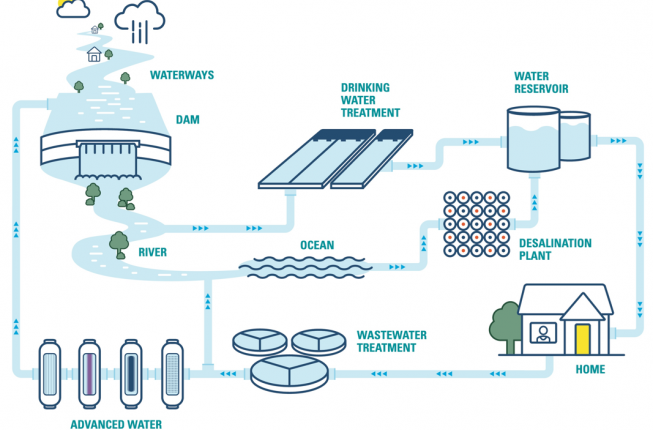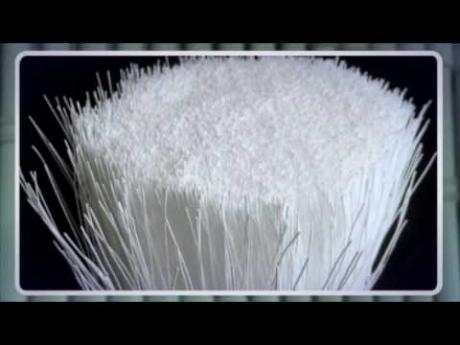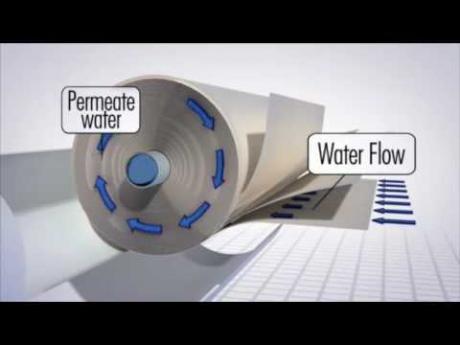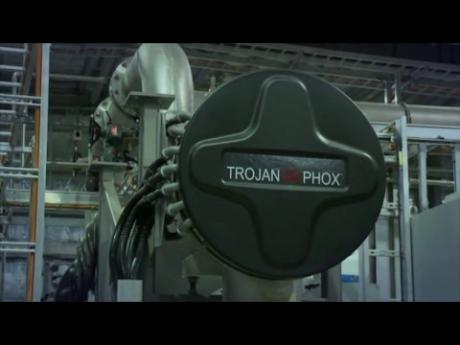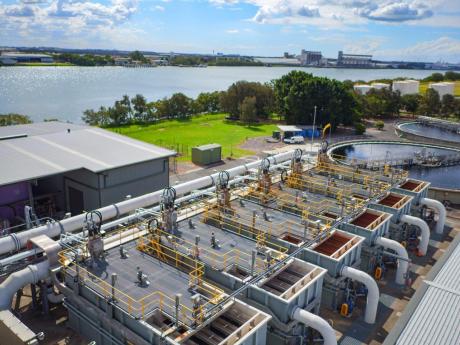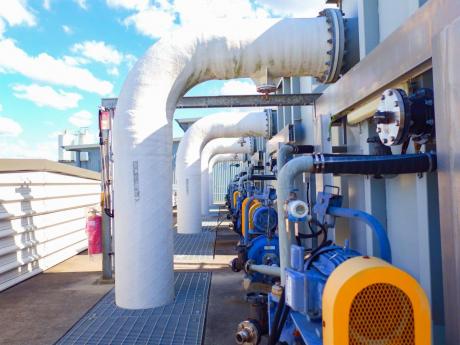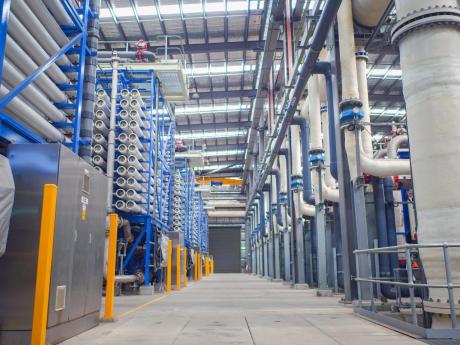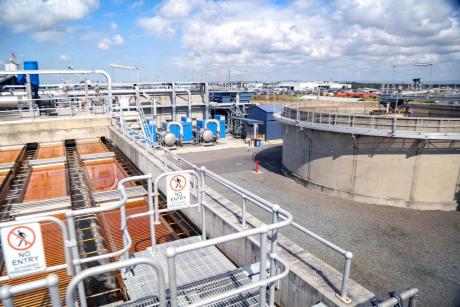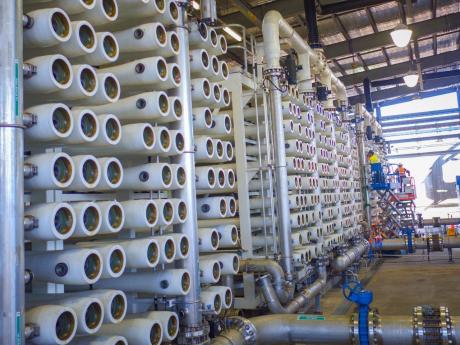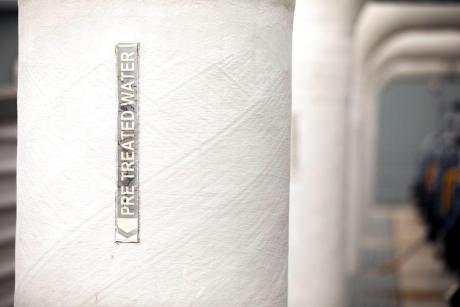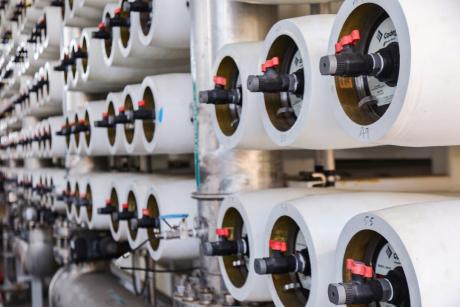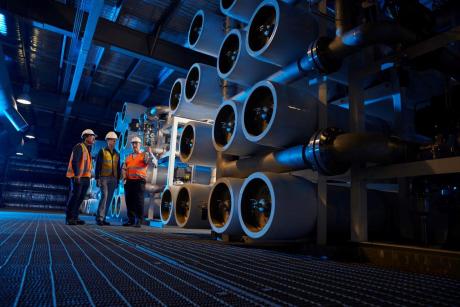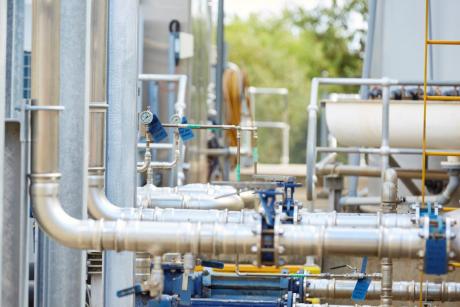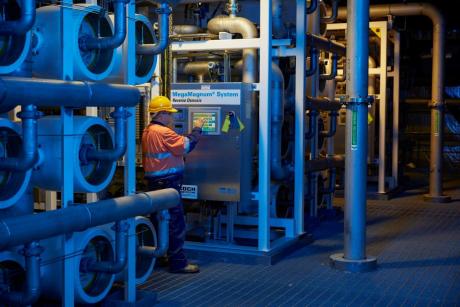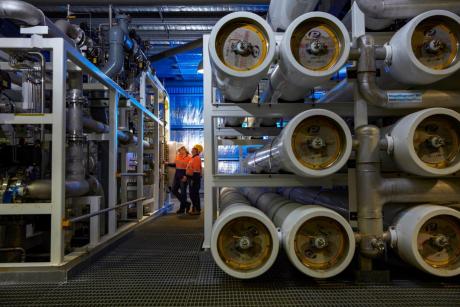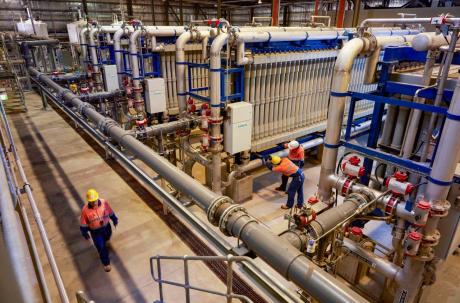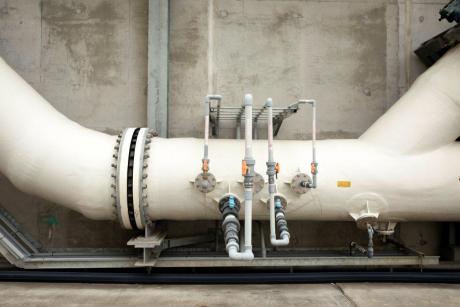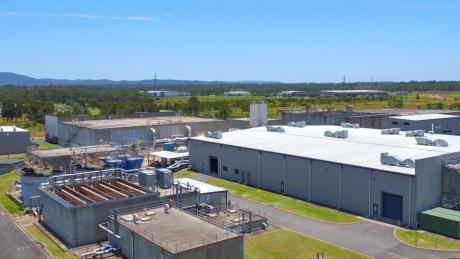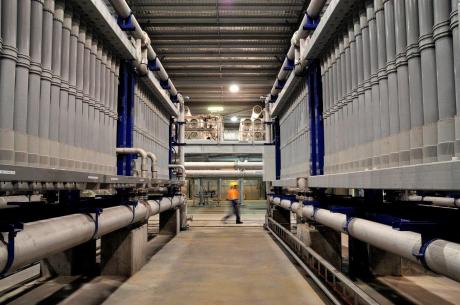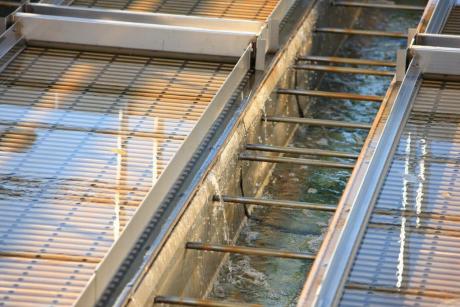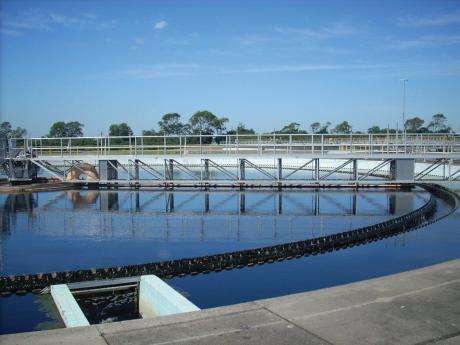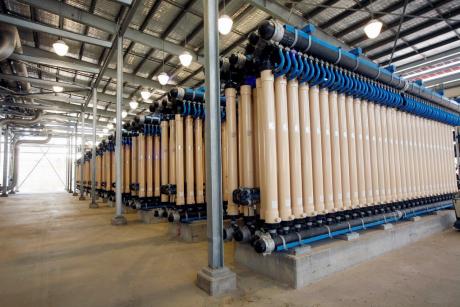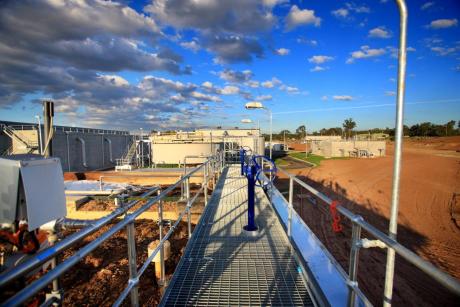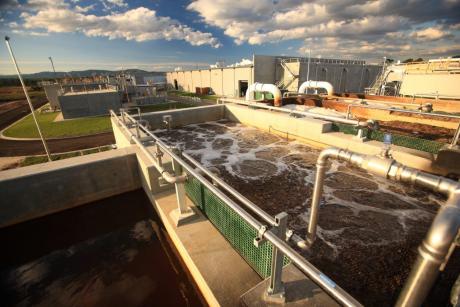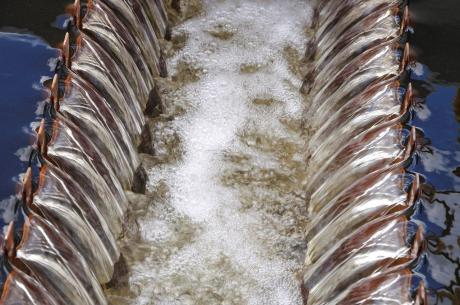Recycled Water
In South East Queensland we need to find new water sources that will help us be less dependent on rain in the future.
Recycled water is a safe method of re-treating and re-using water that would otherwise go to waste. It has been a part of the drought response plan for our region for a long time.
During times of drought, we use recycled water to replenish south-east Queensland’s largest water storage, Lake Wivenhoe, which is a safe and sustainable way to supplement our drinking water.
How our recycled water plants work
Recycled water is made using treated wastewater, which would otherwise be released into our waterways and into Moreton Bay.
We make this water safe through:
- membrane filtration
- reverse osmosis
- ultraviolet advanced oxidation
- disinfection.
In very simple terms, these processes firstly filter out anything larger than a water molecule, such as particles and contaminants like bacteria and viruses.
Then the water is exposed to hydrogen peroxide along with intense UV light to destroy any trace amounts of impurities.
The water is then safe and complies with the Queensland Public Health Act and Regulation, Australian Guidelines for Water Recycling and the Australian Drinking Water Guidelines.
This pure water is then used to replenish Lake Wivenhoe, blending it with captured rainwater already in the lake, before it is treated once again at our Mount Crosby Water Treatment Plants.
A comprehensive testing and monitoring program means water quality is verified multiple times a day.
Water is recycled all the time in the environment through the natural water cycle. We are simply speeding up the water cycle so we can reuse it more quickly. There is no new water, we are drinking the same water the dinosaurs drank.
- Resources
- Gallery
- FAQs
-
External resources
Infographics (source: Water Services Association of Australia)
- Global locations using purified recycled water for drinking
- USA locations using purified recycled water for drinking
- Timeline: Evolution of purified recycled water for drinking around the world
Media articles
- Experts say it's time Victoria started talking about using recycled water for drinking - ABC News
- Purified wastewater as drinking water? Silicon Valley hopes to make it part of battle against epic drought - CBS
- Choice Magazine - Recycled drinking water - We look at the myths, the facts and whether it's safe to drink
- The ‘yuck’ factor: Are NSW residents ready to drink recycled water? ABC Online
- What are the challenges of supplying recycled water? Australian Water Association
- From the archive – The Conversation: More of us are drinking recycled sewage water than most people realise
Reports
Podcasts
- Water you talking about: Water recycling
- Water you talking about: water recycling in space
- Engineering Legends: Pure Water Brewing Alliance – “From sewage to pure water to brewage”
- Stuart Khan on the future of potable reuse Australian Water Association Podcast series 11 October 2017
- ABC Radio National Life Matters: Would you drink recycled waste water? (audio)
Videos
-
What is the Western Corridor Recycled Water Scheme?
The Western Corridor Recycled Water scheme is made up of three advanced water treatment plants at Luggage Point, Gibson Island and Bundamba.
The scheme sources its water from wastewater treatment plants operated by water retailer Urban Utilities.
Once fully operational the scheme can produce up to 180ML a day or about 20% of SEQ’s daily water supply.
How do you make the water safe?We have the knowledge, technology and testing regimes available to be certain recycled water is safe.
Very simply, used water is firstly treated at a wastewater treatment plant to break down organic matter before it arrives at our advanced recycled water treatment plants. Then the processes of membrane filtration and reverse osmosis filter out microscopic particles like silt, chemicals, hormones and microorganisms like bacteria. Ultraviolet advanced oxidation then degrades remaining organic compounds. Water used to replenish Lake Wivenhoe would be very high quality, and comply with the Queensland Public Health Act and Regulation, Australian Guidelines for Water Recycling and the Australian Drinking Water Guidelines.
The treatment process is closely monitored by engineers and water scientists and water quality is verified multiple times a day. We have a comprehensive testing and monitoring program, with multiple critical control points designed to prevent recycled water from entering Lake Wivenhoe if it has not met all critical limits.
In 2012-13, we monitored and tested the purified recycled water we were supplying to power stations. We tested for more than 360 biological, radiological and chemical constituents and no public health concerns were identified. The assessment considered more than 74,000 tests (32,000 on purified recycled water and 42,000 on the treated wastewater provided to the water treatment plant).
In the decade since our advanced water treatment plants were constructed, there has been a substantial increase worldwide in other water recycling schemes for drinking water supply including in Perth, Western Australia and countries such as the US, the UK and Singapore. In fact, for more than 50 years, people in cities across the world have been safely drinking recycled water.
It's important to note that all sources of water, including water from lakes and rivers, contain impurities that need to be removed.
Can I catch COVID-19 from drinking purified recycled water?There is no evidence that COVID19 has been transmitted via wastewater, either before or after treatment, or by drinking recycled water.
Our existing treatment and disinfection processes for drinking water are designed and operated to remove pathogens such as Coronaviruses from water supplies. Coronaviruses are very susceptible to the chlorine disinfection methods and additional treatment processes, such as reverse osmosis and ultraviolet advanced oxidisation, which are used in making recycled water.
A combination of, stringent treatment methods, water quality monitoring and analysis make sure your water is safe for drinking.
Sometimes the remnants of genetic material from COVID-19 are found in wastewater, but this does not mean the infectious virus is present. The genetic material (RNA) can persist for long periods after the virus is able to infect. Health authorities use detection in wastewater to help track where the virus has been present in the community.
How does recycled water fit into South East Queensland's water supply plan?South East Queensland’s water supply plan includes measures to ensure our region’s water supply remains secure, especially during extreme climatic events like drought.
Recycled water is a source of drinking water that is less reliant on rainfall than dams.
The advanced water treatment plants and pipelines were built during the Millennium Drought to provide drinking water. After replenishing rain filled our water storages, the plants were placed into care and maintenance mode.
Recycled water is critical to our ability to respond to drought in South East Queensland should our Water Grid dam levels decline. The program to restart the scheme has been designed so that all three advanced water treatment plants need to be fully operational within two years of re-start.
There may be an opportunity to progressively release purified recycled water into Lake Wivenhoe as each plant comes online but only after full Government approvals, including from public health and drinking water quality regulators.
In the longer term, to help meet population growth and increased demand for water, the advanced water treatment plants in conjunction with the desalination plant, will supplement our drinking water supply on a more regular basis.
With rainfall becoming less reliable, and our population growing, recycled water is a key part of our future water supply plans. With the SEQ Water Grid, the Gold Coast Desalination Plant and the adoption by communities of water efficient behaviours, recycled water can help us achieve a more sustainable water future for South East Queensland.
When do we need the Western Corridor Recycled Water Scheme to start operating?Under South East Queensland’s Drought Response Plan, the decision to remobilise the plants for our drinking water supply needs to be considered should Grid dam levels reach 60% capacity. The plan is adaptive and takes into account seasonal conditions at the time. Seqwater continues to monitor dam levels closely and will advise the State Government when restart is required.
The remobilisation process is expected to take over two and a half years to have all three advanced water treatment plants fully operational. This includes the rigorous validation and verification process of all three plants and pipelines involving Queensland Health and the Water Supply Regulator to make sure the water produced meets the required public health standards.
In 2018, Seqwater recommissioned a small part of its Luggage Point Advanced Water Treatment Plant to supply recycled water for the operation of the Swanbank gas-fired power plant near Ipswich. In 2020, Seqwater also began supplying Tarong Power Station with recycled water.
Who will be drinking recycled water?The recycled water will be used to replenish Lake Wivenhoe, blending it with captured rainwater already in the lake before being treated again at our Mt Crosby Water Treatment Plants and introduced into the region’s water grid.
Recycled water will not be directly added to the bulk water supply from the advanced water treatment plants, without first going through this process. Recycled water, like desalination, will help supplement the SEQ Water Grid supply which moves drinking water around our region every day.
Because of this the majority of SEQ could be supplied with recycled water depending on the operation of the Water Grid.
What happens to the recycled water once it has been treated at our advanced water treatment plants?In Queensland, the legislation governing recycled water for drinking requires recycled water to be stored in an aquifer, lake or dam. As such, Seqwater would use recycled water to supplement our drinking water supply in Lake Wivenhoe by blending recycled water with rainfall captured by the lake.
The water in Lake Wivenhoe is then treated again at the Mount Crosby Water Treatment Plants before supply through the SEQ Water Grid to homes and businesses. All water supplied by Seqwater is required to meet the stringent public health standards of the Australian Drinking Water Guidelines.
Why don't we build more dams?Across South East Queensland we have 26 dams, with the most recent, Wyaralong Dam, constructed in 2011.
Dams will continue to be the major drinking water source in South East Queensland but dams alone will not be enough for a sustainable and resilient water future for our region.
Climate change science shows us that we are likely to experience longer and more frequent droughts into the future. We will experience periods of low rainfall and low inflows into our dams when we will need alternative water sources to help maintain supply.
New dams will not offer the insurance provided by recycled water and desalination during periods when our region is experiencing drought.
For future water security, it makes sense to invest in climate-resilient water infrastructure.
Isn’t recycled water and desalination more expensive?Recycled water and desalination are more expensive to operate compared to water sourced from dams and aquifers but provide certainty of supply in times of drought.
Climate change science shows us that we are likely to experience longer and more frequent droughts into the future.
The availability of desalination and recycled water provides SEQ with its best opportunity avoid high level water restrictions or the need to invest in costly drought contingency infrastructure.
The availability of desalination and recycled water provides SEQ with one of the most diverse and secure water supplies in Australia.
Will recommissioning the Western Corridor Recycled Water scheme impact my water bill?The original costs of developing and constructing the Western Corridor Recycled Water Scheme are already factored into bulk water charges paid by customers.
There will be no immediate impact on water bills. The independent Queensland Competition Authority (QCA) will undertake its next bulk water price review over the next 12 months and recommend future prices to the State.
The ongoing impact on bulk water prices will be dependent how much water the WCRWS is required produce on an ongoing basis into the future.
What happens if rain fills our dams while the Western Corridor Recycled Water Scheme is being recommissioned?Seqwater will reassess the restart program for the WCRWS depending on when it rains how much rain impacts on Water Grid dam levels, the Bureau of Meteorology’s seasonal outlook.
Seqwater will work with the State Government to best determine best way forward for the scheme.
For the future it will be important to keep elements of the scheme already mobilised in a high state of readiness, similar to how we currently manage the Gold Coast Desalination Plant.
Will adding recycled water to Lake Wivenhoe impact flora and fauna?Recycled water released into Lake Wivenhoe is far cleaner than stormwater run-off from our catchments which enter the lake during and after rain events.
Recycled water released into Lake Wivenhoe will also be treated to comply with the Queensland Public Health Act and Regulation, Australian Guidelines for Water Recycling and the Australian Drinking Water Guidelines.
As a part of Seqwater’s management of Lake Wivenhoe, catchment monitoring programs are in place at the lake and the mid-Brisbane River downstream. These programs will continue during the release of recycled water to monitor catchment health.
Why don’t we use recycled water for other uses like industry and agriculture rather than drinking?Recycled water is already being supplied to power stations in South East Queensland, including Swanbank and Tarong.
Seqwater continues to explore options on how to make recycled water available for agriculture and industrial use. We must balance this use with the need for recycled water to supplement our drinking supply as part of our drought response plan.
Non-drinking recycled water from other schemes that use different treatment processes are in use across South East Queensland. This water is used for purposes other than drinking such as irrigating sporting fields. The availability of non-drinking recycled water varies from council to council and your local water service provider will have details of schemes in your area.
How will the Western Corridor Recycling Scheme recommissioning program be carried out?In 2018, Seqwater recommissioned part of the Luggage Point Advanced Water Treatment Plant to supply the Swanbank gas-fired power plant near Ipswich.
The rest of the scheme will be brought online in phases, in a process that is expected to take over two and half years to have all three advanced water treatment plants fully operational. This includes a rigorous validation process of the scheme, involving Queensland Health and the Queensland Water Supply Regulator to ensure any water produced meets the required public health standards.
Luggage Point will be the first plant to be brought fully online, producing about 70ML a day (ML/d), followed by Bundamba at 60ML/d, and Gibson Island at 50ML/d.
Recycled water could progressively be used to replenish Lake Wivenhoe. By the time all three plants are operational, a total of 180ML a day can be supplied.
The verification and validation process includes more than three months of water quality testing for each plant followed by a review by the regulator. We estimate it would take at least 12 months before first recycled water is available to be released into Wivenhoe Dam, subject to final regulator and State approval.
